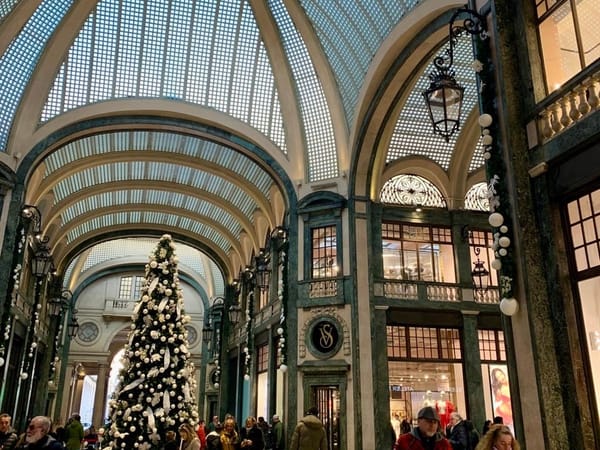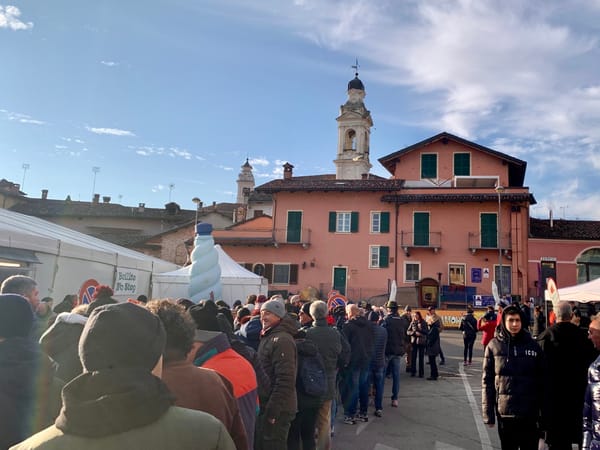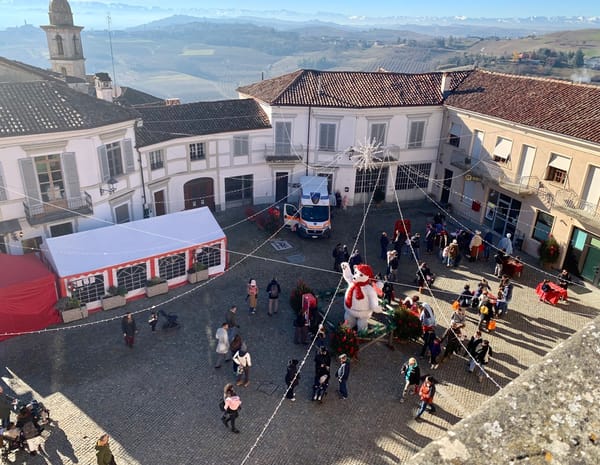A Food Lover’s Introduction to Piedmont, Italy
Must-try dishes, seasonal highlights, and unmissable Michelin-starred restaurants.
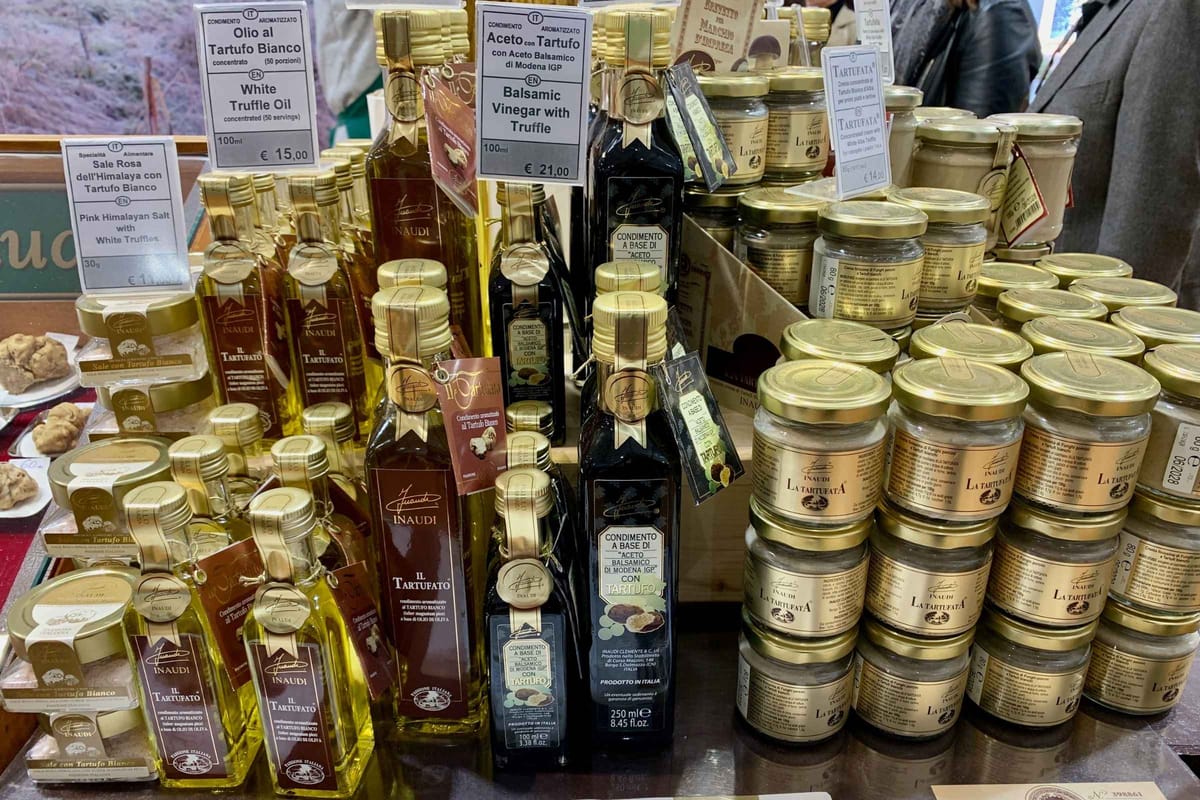
This may be a bold claim, but Piedmont might be the top gastronomic destination in Italy.
Tucked away in the country’s northwest, it has all the ingredients of a world-class food destination—fertile hills, Alpine pastures, prestigious wines, rare white truffles, and a deep-rooted culinary tradition.
Birthplace of the Slow Food Movement, Piedmont is a region where rustic traditions live comfortably alongside high-end culinary innovation.
From truffle-topped tajarin to garlicky bagna cauda, here’s what to eat—and where.
Want a sneak peek into a typical Piedmontese kitchen? Check out my favourite foods I eat with my Piedmontese family.
Piedmontese Cuisine: Must-Try Dishes
Signature Meat Dishes
Piedmont’s pastures and Alpine valleys lend themselves to hearty, meat-heavy cooking. Three classics you’ll find everywhere are vitello tonnato—thinly sliced veal topped with a creamy tuna and caper sauce—carne cruda all'Albese—also thinly sliced veal, but served raw and topped with olive oil, Parmesan, and rocket—and bollito misto: slow-boiled meat served with condiments.
Cheeses
Love cheese? Then you’ll love Piedmont, which is home to over 30 different varieties. Standouts include tangy robiola di Roccaverano, crumbly castelmagno, and nutty toma. Each one tells a story of its local terroir, and they pair beautifully with the region’s wines.
Pasta
Also famous for its egg pasta, Piedmont's homegrown pasta dishes include tajarin (fine golden ribbons, similar to tagliolini)—usually served with sage and butter, meat ragù, or Alba’s prized white truffles—and agnolotti al plin (think mini ravioli filled with either vegetables or cooked meat).
Hearty Winter Classics
The region’s long, cold winters inspire dishes made for cosiness. Think creamy polenta with wild boar, pillowy gnocchi tossed with castelmagno, or bagna cauda: a warm, garlicky anchovy dip served with raw and cooked vegetables (and a nice glass of Barbera d'Asti).
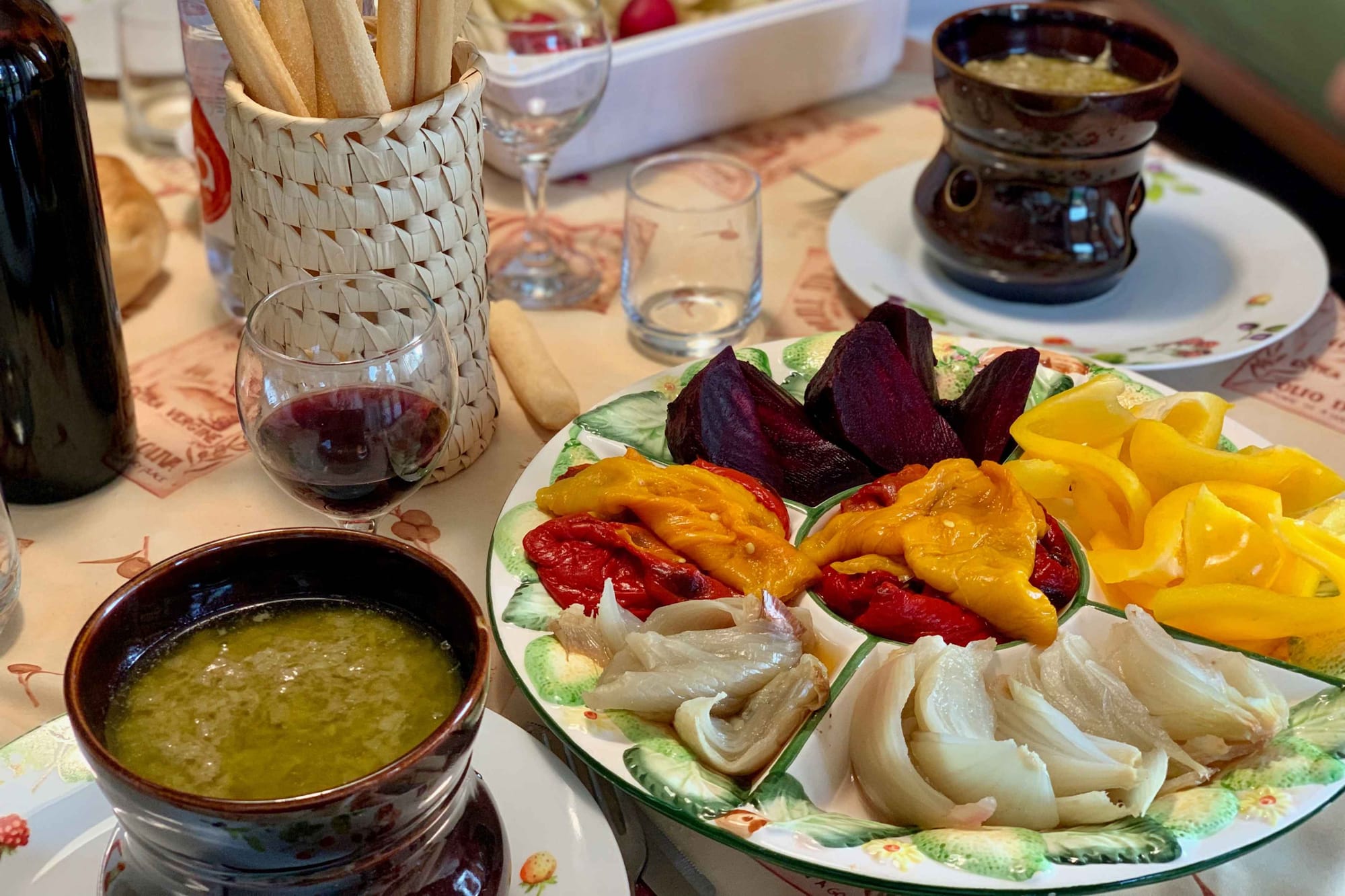
Antipasti…but Not as You Know It
When you head to a Piedmontese restaurant, you’d better bring your appetite. While antipasti in most of Italy are just a starter, in Piedmont, they’re a main event, with 20–30 hot and cold antipasti often served.
Piedmontese Fritto Misto
Alternatively, try the fritto misto—a crispy parade of meats, seasonal vegetables, meat, fish, fruit, and sweets—all lightly battered and fried to golden perfection. Expect anything from carne cruda (Piedmontese steak tartare) to marinated vegetables and tiny stuffed peppers.
Desserts, Chocolate, & Hazelnuts…Oh My!
Sweetness is woven into Piedmontese culture, not least because of the region’s hazelnuts—considered among the best in the world. Alba is home to the Ferrero factory—birthplace of Nutella and Kinder—but artisanal treats are just as tempting.
Try bonet, a rich chocolate and amaretti custard pudding, or gianduiotti—melt-in-the-mouth chocolates made with cocoa and hazelnuts.
If you’re in Alta Langhe, don’t miss the torta di nocciole—a simple yet irresistible flourless hazelnut cake that originated in the Langhe hills.
Michelin-Starred & Sustainable Restaurants in Piedmont, Italy
There is no shortage of sustainable, farm-to-table fine dining options in Piedmont—especially in the Alba area, which boasts no less than 15 Michelin-starred restaurants.
Wondering where to start? Here’s a selection of the best for your first—or next—visit.
Ristorante del Cambio — Turin
Most luxury travellers in Turin head to the historic, Michelin-starred Ristorante del Cambio (and the adjoining café at Farmacia del Cambio).
This iconic Turin staple dates back to 1757, and retains much of its antique grandeur — the lovingly restored Resorgimento room still has many of its original features, dating back to the 1800s.
Chef Diego Giglio serves traditional Piedmontese cuisine with modern twists, like tagliolini with caviar, while the tasting menu offers surprising combinations like pigeon bisque and egg yolk.
Piazza Duomo — Alba
Owned by the Ceretto family — whose passion for art is exemplified by the Barolo Chapel, decorated by artists Sol Lewitt and David Tremlett — the first thing you notice when you walk into Piazza Duomo are its striking pink walls and fresco by Francesco Clemente.
But this immersive dining experience is anything but surface-level. Under the guidance of three-Michelin-starred Chef Enrico Crippa, the restaurant serves three tasting menus, with a fourth available at lunchtime.
Each menu takes you on a journey — one crosses gardens and seasons, another traverses regions, and a third explores Italy and beyond — always featuring seasonal ingredients and innovative presentations.
Locanda del Sant’Uffizio Enrico Bartolini — Cioccaro di Penango
Set in a former monastery nestled in the less-visited but no less charming Monferrato hills, this intimate, elegant two-Michelin-starred restaurant offers a refined take on Piedmontese cuisine.
Under the guidance of Gabriele Boffa — who was born and raised in the Langhe — dishes at Locanda del Sant’Uffizio are crafted with precision, showcasing the rich flavours of local ingredients.
Don’t miss the emblematic agnolotti al plin, handcrafted by Boffa himself.
Villa Crespi — Orta San Giulio
If you head to Piedmont’s scenic lake district, dining at Villa Crespi is an experience not to be missed. The historic villa was built in 1789 and is characterised by its Neo-Moorish style, set just a stone’s throw from Lake Orta.
Three-Michelin-starred Chef Antonino Cannavacciuolo hails from Campania, and his dishes blend inspiration from both his roots and his adopted home of Piedmont.
The restaurant offers two tasting menus and a short à la carte, where dishes like soused amberjack and frog legs with hazelnut butter surprise and delight guests.
Borgo Sant’Anna — Monforte d’Alba
Set amidst the picturesque vineyards of Monforte d’Alba with panoramic views of the Langhe hills, Borgo Sant’Anna is a Michelin-starred restaurant that blends tradition and innovation under the guidance of Chef Pasquale Laera.
Originally from Puglia, Laera draws on his pugliese heritage to reimagine classic Piedmontese dishes, emphasising seasonal produce and local specialties — such as his autumn cartoccio, that blends roasted vegetable flavours with tangy castelmagno cheese.
Enoclub — Alba
Located under the arcades of Piazza Michele Ferrero (formerly Piazza Savona) in the historic heart of Alba, Enoclub offers a contemporary take on Piedmontese food in a relaxed yet elegant setting with attentive service.
Chefs Luca Boffa and Marco Serra blend tradition with innovation, and every dish — such as the tajarin with butter and Calabrian anchovies — is a tribute to the produce and cuisine of the Langhe.
Osteria dell’Arco — Alba
Across the piazza from Enoclub is Osteria dell’Arco — a charming, family-run establishment that offers a more intimate, approachable Michelin-starred experience while staying true to Piedmontese culinary traditions.
Established in 1986 — two years after its sister restaurant Osteria del Bocondivino at Bra — Osteria dell’Arco is deeply connected to the Slow Food movement.
Expect seasonal, locally sourced ingredients and dishes that highlight the region’s rich flavours in a warm, inviting setting that feels authentically Albese.
Planning a Culinary Trip through Piedmont
Piedmont is truly a year-round destination—you'll find plenty to do in any season.
Autumn is the most popular time to visit, as it’s when the Alba Truffle Fair takes place—attracting chefs, foodies, and the truffle-curious from all over the world. Booking accommodation, wine tasting, and Michelin dining experiences well in advance is essential during truffle season.
Heading to Piedmont this autumn? Here’s what to pack.
In winter, you can head to the slopes for skiing and snowboarding—or a wellness retreat, if, like me, a hot tub surrounded by snowy peaks is more your thing. Chocolate lovers should head to Turin in February for the CioccolaTò festival.
Spring brings new life to the vineyards, when wineries reopen their doors—making it the perfect time for quieter vineyard visits and wine tastings with a more personal touch. It’s also when spring produce like asparagus comes into season, and food and wine festivals take place.
Planning vineyard visits? These are the ten best luxury hotels in wine country.
Summer can be pleasant in the hills and mountains but hot in southern Piedmont, and visitors should be aware that many businesses close for the second half of August.
Piedmont: a Foodie’s Heaven
Piedmont is one of those regions that should be on every foodie’s bucket list, offering the chance to immerse yourself in a food and wine culture that reflects the land and people that produced it.
With its mix of elevated Italian cuisine, world-class wines, and forward-thinking chefs, Piedmont is unlike anywhere else in Italy.
Ready to visit Piedmont? Here’s how to get to—and around—the region.
Enjoyed this post? Support Secret Piemonte and buy me a caffè ☕


